Knowledgeable’s Ranking
Professionals
- Very quick RAID 0 efficiency
- 2TB to 32TB capability
- Cross-platform SoftRAID Professional included
- Rugged carrying case.
Our Verdict
It’s expensive, however OWC’s Thunderblade four-slot, NVMe SSD Thunderbolt 3 enclosure delivers the efficiency items–with as much as 32TB of capability–to the professionals that want it.
Worth When Reviewed
This worth will present the geolocated pricing textual content for product undefined
Greatest Pricing Right this moment
OWC’s ThunderBlade delivers wonderful learn and write efficiency in a good-looking, svelte bundle that’s obtainable in capacities as much as a whopping 32TB. Actually it’s the third quickest exterior SSD we’ve examined, and the quickest Thunderbolt SSD within the charts.
What it isn’t, is reasonable. Count on to put down 1000’s, not tons of for the expertise. For a product aimed toward movie and video execs, that’s not typically a problem. For you and me…
The ThunderBlade is a black, radiator-finned, 4-slot NVMe M.2 SSD enclosure measuring roughly 7.5-inches lengthy, by 4.75-inches vast, by 1-inch tall. It’s a quite hefty (and attractive by my lights) beast at 1-pound, 10-ounces. No inadvertently sliding off the desk with this one.
A 3-inch lengthy slit on the entrance is house to the ability/exercise LED, whereas the rear of the unit presents up two Thunderbolt 3 ports in addition to the DC enter jack. The ability brick (AC adapter) that matches into stated enter is 15 volts and 4.8 amps.
Because it’s envisioned as quick, rugged storage for video fieldwork, the ThunderBlade is available in a sturdy carrying case that matches each the drive and the ability adapter. The case is manufactured from thick, impact-resistant plastic that we’re positive will maintain up.
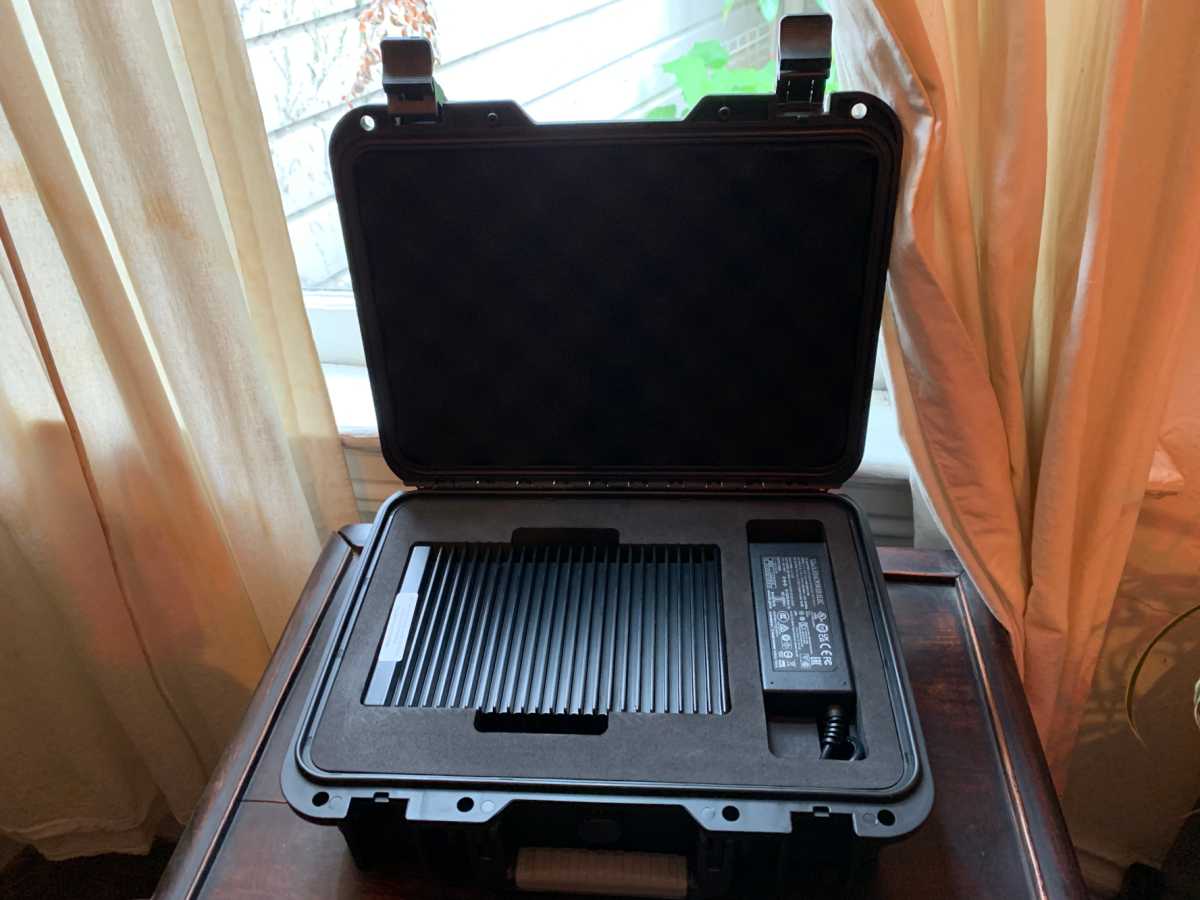
The ThunderBlade ships with a three-year license for the Professional model of the corporate’s cross-platform SoftRAID software program. After three years, you lose the flexibility to create new arrays, however fundamental performance stays intact–you don’t lose use of the drive.
You could after all additionally use macOS’s or Window’s personal software program options, however you’re then tied to at least one or the opposite working system. One cause I desire {hardware} RAID is that it’s OS-independent. Lots of the restoration instruments I exploit are Linux-based.
Observe that the ThunderBlade can be obtainable in an eight-slot model, logically monikered the ThunderBlade X8. Alas, you’d assume it could prime out at 64TB, however it’s at present sitting at 16TB with a 32TB model out quickly. We want there have been unpopulated variations of each the four-slot and eight-slot.
OWC ThunderBlade: Worth
Maintain onto your hats people: the entry-level 2TB ThunderBlade we examined prices a cool $800. It will get steeper from there, with the 4TB model costing $1,180, the 8TB model is $1,800, the 16TB model is $2800, and the 32TB model setting you again a quite daunting $6,000.
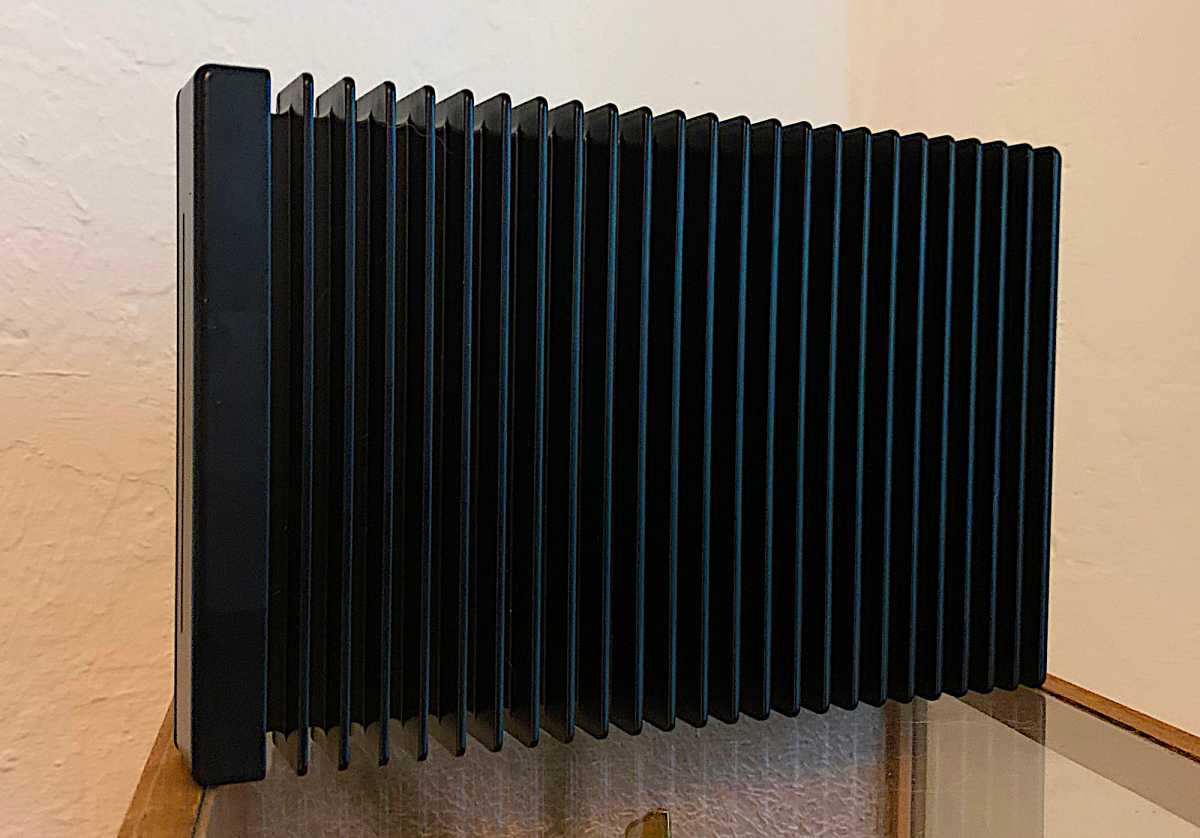
The pricing locations the ThunderBlade firmly in AV skilled territory, as there are definitely cheaper methods for finish customers to get this sort of efficiency and capability. A minimum of as much as 16TB. 8TB SSDs nonetheless carry a hefty premium at effectively over $1,000 every (4 are within the 32TB model).
OWC’s personal 1M2 and particularly Adata’s SE920 40Gbps USB 4 SSDs come to thoughts as extra inexpensive choices for finish customers.
Nonetheless, OWC makes high-quality items and the guarantee is three years which is sweet for an exterior drive. However given the worth, we do want the SoftRAID Professional license was perpetual, not restricted to a few years.
How briskly is the ThunderBlade?
Fairly darn quick could be the reply to this query. Even with the 4 smaller 480GB SSDs OWC shipped in our take a look at unit, the ThunderBlade proved the third quickest exterior SSD I’ve examined. It’s bested solely by the aforementioned Adata SE920 and OWC’s 1M2–each 40Gbps USB 4 drives.
Testing on a Mac Studio with AmorphousDiskMark and Disk Pace take a look at proceeded with out incident, however there have been one or two incidents with PCWorld’s take a look at mattress which are described on the finish of this part.
We examined in RAID 0 and RAID 1+0, which you would possibly think about for redundancy within the bigger capability configurations. We additionally examined the ThunderBlade in non-RAID as single drives however efficiency was as weak because it was with the not too long ago reviewed OWC Categorical 4M2. About 840MBps studying, and 750MBps writing.
IMHO, there’s no cause to purchase a ThunderBlade should you don’t run it in RAID 0. NVMe SSDs will not be the failure dangers that onerous drives are, and there are cheaper choices for single drives.
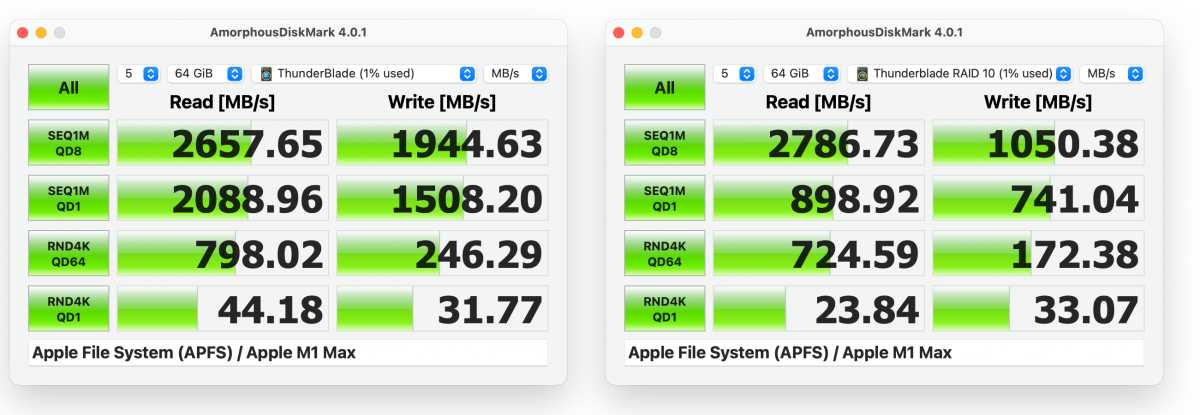
Blackmagicdesign’s Disk Pace Check rated the ThunderBlade as significantly slower than AmorphousDiskMark, with the latter being extra consistent with the Home windows take a look at instruments proven after the Disk Pace Check graphic.
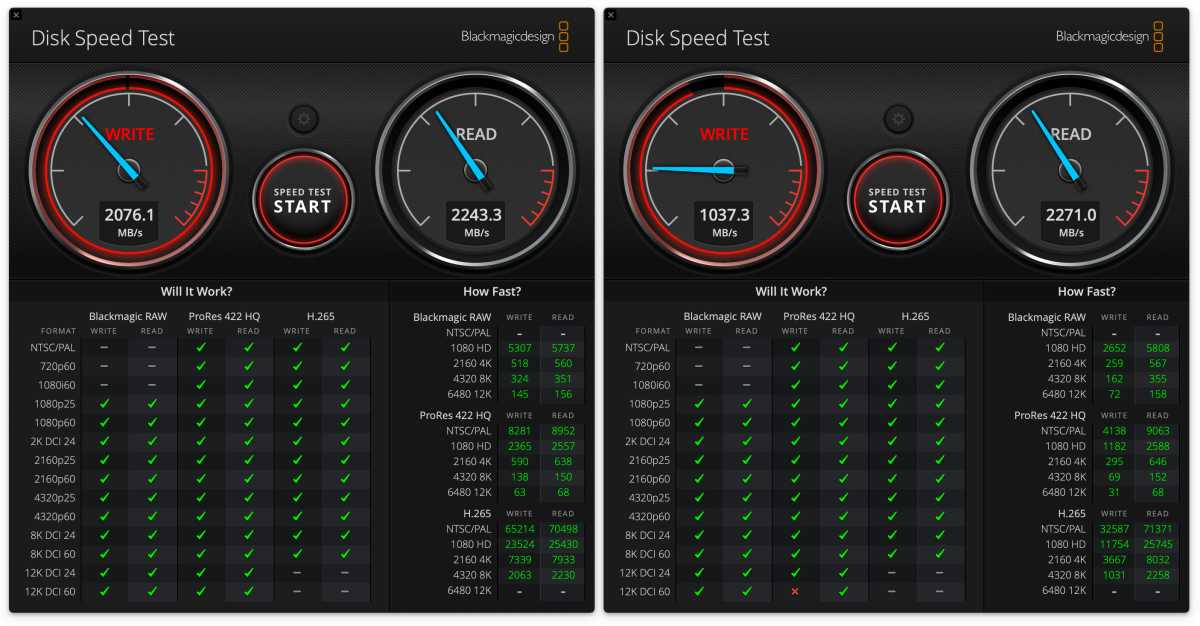
CrystalDiskMark 8 on IDG’s PCWorld Home windows take a look at mattress thought very extremely of the TunderBlade’s sequential switch capabilities as you possibly can see beneath.

Random efficiency underneath CrystalDiskMark 8 was good, however not so good as the USB 4 drives.
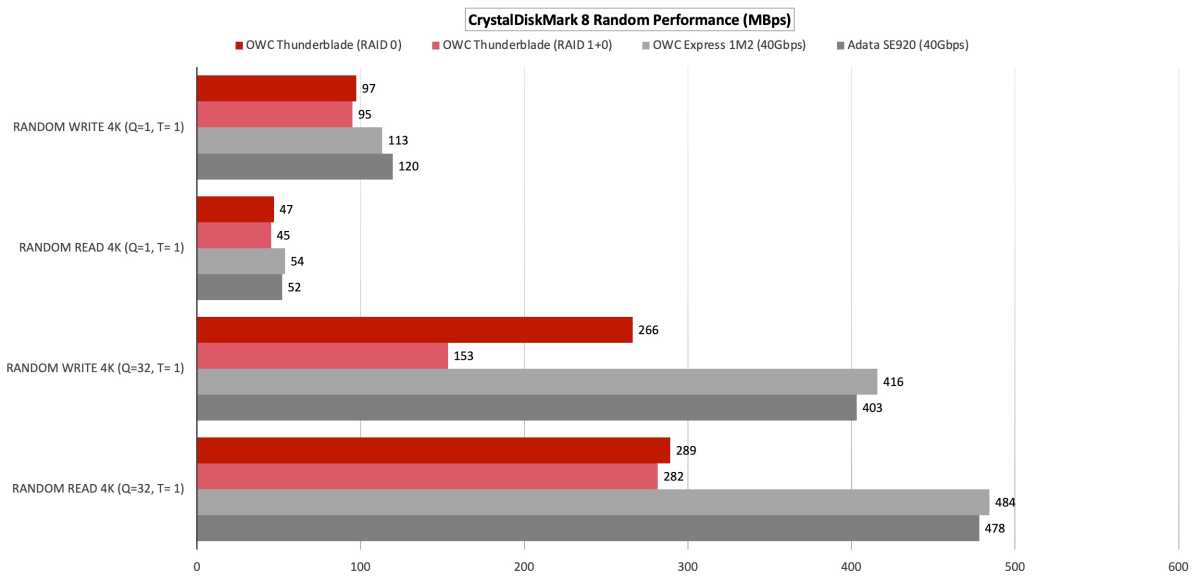
The ThunderBlade was very quick in our 48GB switch assessments. Holding its personal in opposition to the 2 extraordinarily quick USB 4 SSDs.
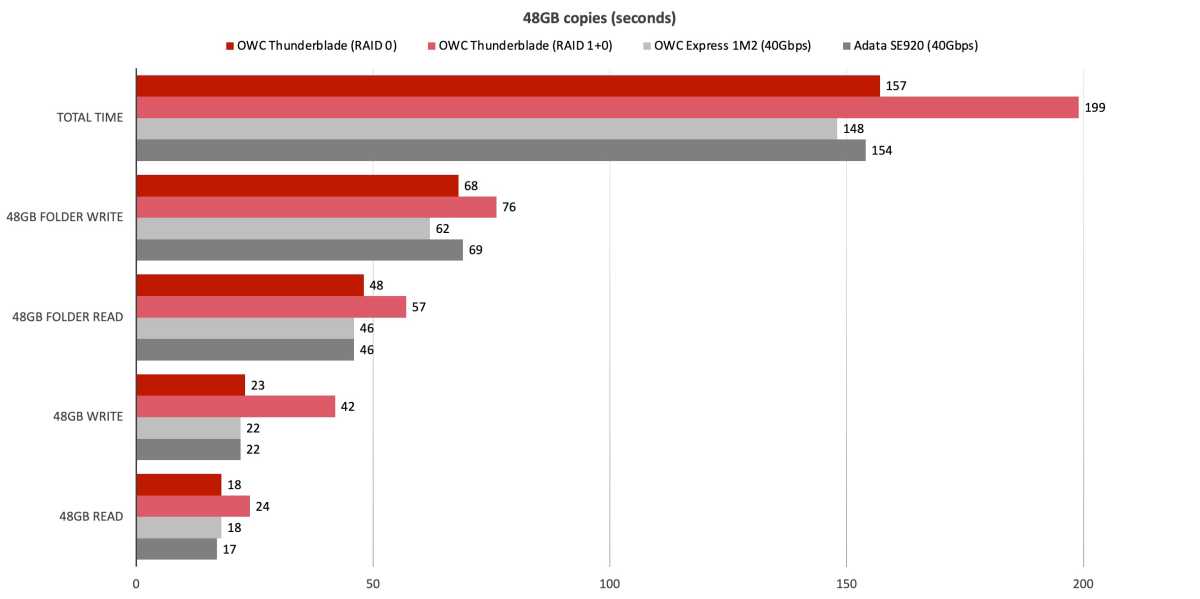
The SSDs being solely 480GB did rule out our 450GB (483 billion bytes) write to a single drive, however we count on it could be as gradual because the 4M2’s[link when possible) we recently reviewed.
The ThunderBlade in RAID 0 is fantastic in this large file write, portending good things when you stream 4K or 8K video to it.
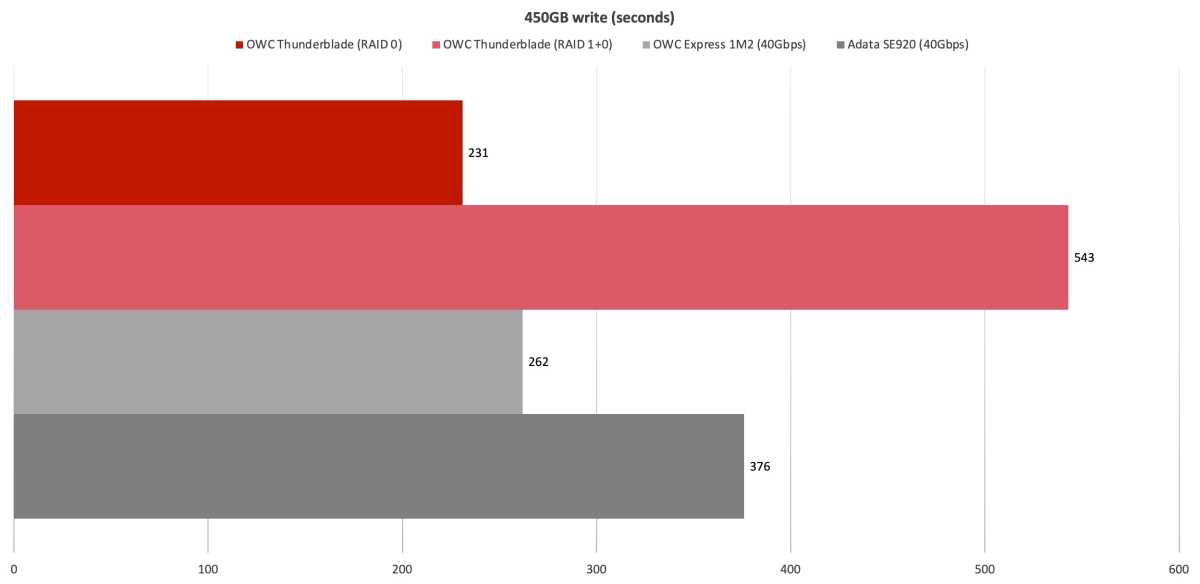
As to those Window idiosyncrasies, in a couple of instances, a reboot was required before a SoftRAID volume or the separate drives would show up. And bizarrely, when I forgot to reformat to NTFS from APFS, SoftRAID still mounted the APFS volume and CrystalDiskMark 8 and AS SSD both ran fine. By what mechanism this was possible, I have no idea (no other suitable software installed) unless SoftRAID sports an APFS driver for Windows. If it does, it isn’t perfect as our real-world 48GB test write froze at the 88 percent mark. Once reformatted to NTFS, everything was hunky-dory and the ThunderBlade performed as advertised.
Should you buy the OWC Thunderblade 4?
We like the styling, we love the rugged enclosure and carrying case, and the performance is excellent in RAID 0–the only way the ThunderBlade should be utilized by my lights. That leaves financial wherewithal as your sole consideration when buying a ThunderBlade.


